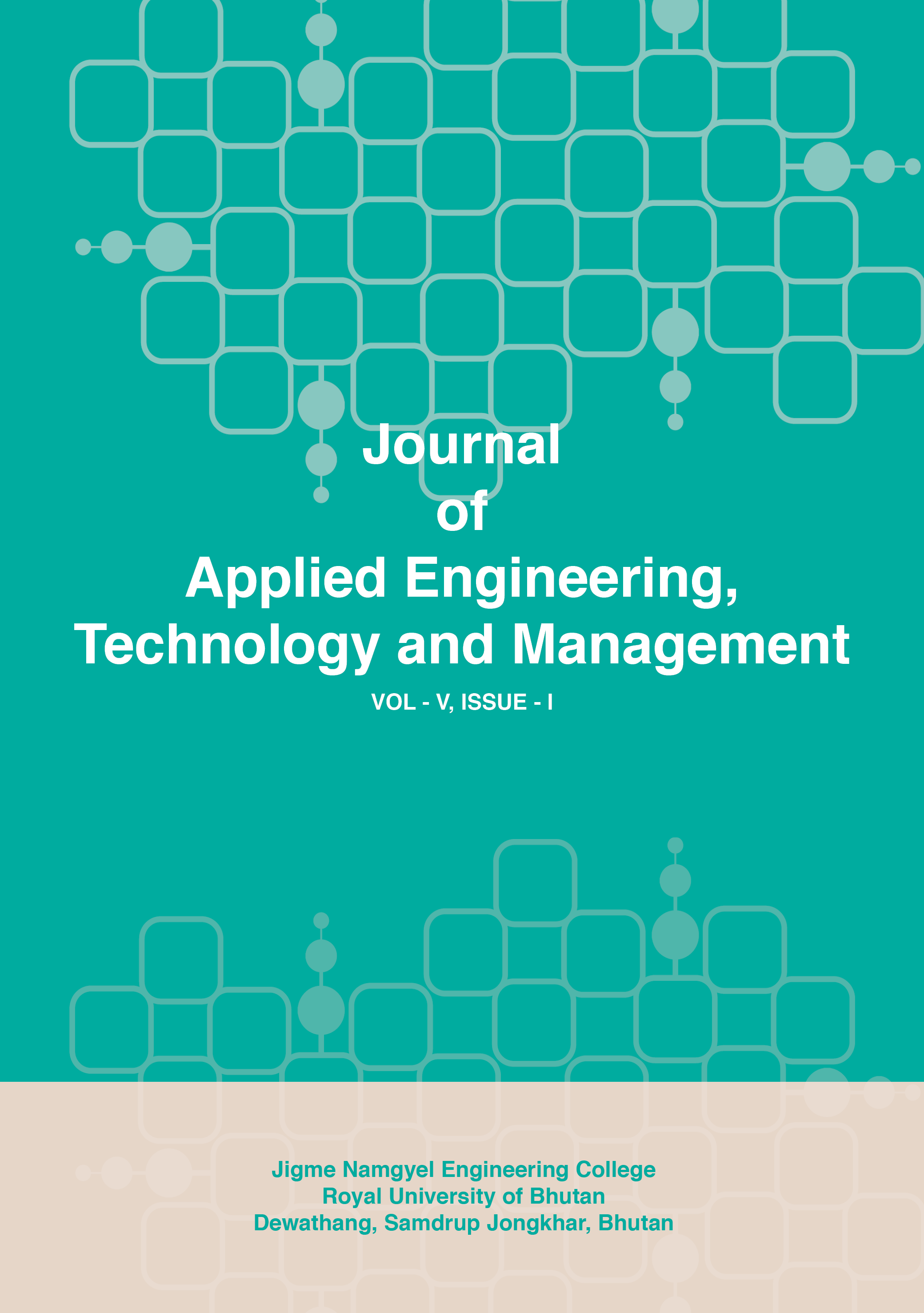Building Self-Confidence in Students: Techniques and Impacts
DOI:
https://doi.org/10.54417/jaetm.v5i1.141Abstract
This study investigates the impact of various teaching strategies on enhancing self confidence among Electronics and Communication Engineering students. The implemented techniques such as teachers and peer feedback, extempore speech, and problem project-based learning were implemented. Pre- and post-surveys, observations, and interviews were used to gather the data. Initially students exhibited low self-confidence, shyness, and less expressiveness. After implementing the techniques, there was a significant improvement in classroom participation, willingness to engage and communication skills. The results suggest these interventions can positively influence student confidence and academic engagement
References
[1] A. Malhotra, S. Kumari, and S. Faiyaz, "A Study of the Level of Self-Confidence among High and Low Achiever School Students," The International Journal of Indian Psychology, vol. 10, no. 2, 2022. doi:0.25215/1002.157.
[2] O. Akbari and J. Sahibzada, "Students’ Self-Confidence and Its Impacts on Their Learning Process," American International Journal of Social Science Research, vol. 5, no. 1, pp. 1–15, Jan. 2020. doi:10.46281/aijssr.v5i1.462.
[3] N. Kerimbayev, Z. Umirzakova, R. Shadiev, and V. Jotsov, "A student-centered approach using modern technologies in distance learning: a systematic review of the literature," Smart Learning Environments, Dec. 2023. doi: 10.1186/s40561-023-00280-8.
[4] B. J. Zimmerman, "Self-Efficacy: An Essential Motive to Learn," Contemporary Educational sychology, vol. 25, no. 1, pp. 82–91, 2000. doi: 10.1006/ceps.1999.1016[5] A. Efrat, "Reviews of literature regarding interpersonal skills and the workplace over the years
2011–2021," Munich Personal RePEc Archive, 2022.
[6] R. search Winter in and C. Munn-Giddings, A Handbook for Action Re Health and Social Care, Routledge, 2001. [Online]. Available: https://api.taylorfrancis.com/content/books/mono/download identifierName=doi&identifierValue=10.4324/9780203199671&type=googlepdf.
[7] D. W. Tileston, What Every Teacher Should Know About Classroom Management and Discipline, vol. 5, Corwin Press, 2004.
[8] S. L. Christenson, A. L. Reschly, and C. Wylie, Handbook of Research on Student Engagement, Springer, 2012. [9] G. P. Hollenbeck and D. T. Hall, "Self-confidence and leader performance," Organizational Dynamics, vol. 33, no. 3, pp. 254–269, 2004. doi: 10.1016/j.orgdyn.2004.06.003.
[10] M. Komarraju, S. Musulkin, and G. Bhattacharya, "Role of student-faculty interactions in developing college students’ academic self-concept, motivation, and achievement," Journal of College Student Development, vol. 51, no. 3, pp. 332–342, May 2010. doi: 10.1353/csd.0.0137.
[11] N. Beri and M. I. Stanikzai, "Self-Efficacy Beliefs, Student Engagement and Learning in the Classroom: A Review Paper," American International Journal of Research in Humanities, Arts and Social Sciences, pp. 18–242, 2018. [Online]. Available: http://www.iasir.net.
[12] E. T. Pascarella, "Student-Faculty Informal Contact and College Outcomes," Review of Educational Research, vol. 50, no. 4, pp. 545–595, 1980. doi: 10.3102/00346543050004545.
[13] H. Mulyono and R. Saskia, "Dataset on the effects of self-confidence, motivation and anxiety on Indonesian students’ willingness to communicate in face-to-face and digital settings," Data in Brief, vol. 31, Aug. 2020. doi: 10.1016/j.dib.2020.105774.
[14] M. J. Harry and M. Lang, "Does Classroom Participation Improve Student Learning?," 1997.
[15] F. M. Newmann, "Student Engagement and High School Reform," Educator, 1989.
[16] J. D. Willms, Student Engagement at School: A Sense of Belonging and Participation– Results from PISA 2000, OECD, 2003.
[17] M. A. Ruiz-Primo, "Informal formative assessment: The role of instructional dialogues in assessing students’ learning," Studies in Educational Evaluation, vol. 37, no. 1, pp. 15–24, Mar. 2011. doi: 10.1016/j.stueduc.2011.04.003.
[18] K. Alshare and N. M. Hindi, "The importance of presentation skills in the classroom: Students and instructors perspectives," Journal of Computing Sciences in Colleges, vol. 19, no. 4, pp. 6–15, 2004.
[19] S. M. Gamlem and K. Smith, "Student perceptions of classroom feedback," Assessment in Education: Principles, Policy & Practice, vol. 20, no. 2, pp. 150–169, May 2013. doi:10.1080/0969594X.2012.749212.
[20] N. H. Jainal and M. Shahrill, "Incorporating Jigsaw Strategy to Support Students’ Learning through Action Research," International Journal on Social and Education Sciences, vol. 3, no. 2, pp. 252–266, Apr. 2021. doi: 10.46328/ijonses.75 [21] L. Halimah and V. Sukmayadi, "The role of ‘jigsaw’ method in enhancing Indonesian prospective teachers’ pedagogical knowledge and communication skill," International Journal of Instruction, vol. 12, no. 2, pp. 289–304, Apr. 2019. doi: 10.29333/iji.2019.12219a.
[22] D. W. Johnson and R. T. Johnson, "An educational psychology success story: Social interdependence theory and cooperative learning," Educational Researcher, vol. 38, no. 5, pp. 365–379, Jun. 2009. doi:10.3102/0013189X09339057.
[23] J. Lynne et al., "Adolescent Perceptions of Parent’s Failure and Intelligence Mindsets." [Incomplete citation– more details needed]
Downloads
Published
How to Cite
Issue
Section
License
Copyright (c) 2025 Copyright (c) 2025 Journal of Applied Engineering, Technology and Management (JAETM)

This work is licensed under a Creative Commons Attribution-NonCommercial 4.0 International License.


